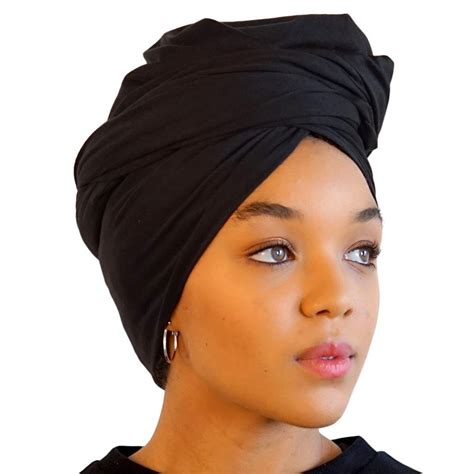Introduction
African head wraps, also known as gele or ichafu, are an integral part of African culture and have been worn for centuries by women of all ages. These vibrant and diverse head coverings hold deep cultural significance and have been used for various purposes, including protection, adornment, and social expression.

Historical Origins
The origins of African head wraps can be traced back to ancient Egypt, where women wore elaborate headdresses and scarves to protect their heads and faces from the sun and sand. Over time, these head coverings evolved and became a staple in many African cultures.
Cultural Significance
In many African cultures, head wraps symbolize womanhood, maturity, and marital status. They are often worn for special occasions, such as weddings, funerals, and religious ceremonies. The choice of fabric, color, and style of the head wrap can convey specific messages about the wearer’s ethnicity, religion, or social status.
Types of Head Wraps
There are countless types of African head wraps, each with its unique design and cultural significance. Some of the most popular include:
- Gele: A large, square-shaped cloth that is folded and wrapped around the head in various styles.
- Ichafu: A smaller, triangular-shaped cloth that is worn over the gele or on its own.
- Turbans: Long, rectangular cloths that are wrapped around the head in a turban style.
- Veils: Light, transparent fabrics that are worn over the face or head for religious or cultural reasons.
Materials and Patterns
African head wraps are made from a variety of materials, including cotton, silk, lace, and velvet. They are often adorned with intricate patterns, beads, and embroidery that reflect the cultural heritage and artistic traditions of different African regions.
Versatility and Applications
Beyond their cultural significance, African head wraps have also gained popularity as a fashion accessory. They can be worn in various styles to complement different outfits and occasions. They are also used in headwear design, creating unique and stylish hats and accessories.
Pain Points and Motivations
Pain Points:
- Lack of diversity in available head wraps
- Limited knowledge of traditional wrapping techniques
- Cultural appropriation concerns
Motivations:
- Desire to express cultural identity
- Need for more inclusive representation
- Appreciation for African artistry and craftsmanship
Step-by-Step Approach to Wearing a Head Wrap
- Choose the appropriate head wrap for your occasion and personal style.
- Wrap the head wrap securely around your head, ensuring it is comfortable and stays in place.
- Style the head wrap according to the desired look, using pleats, folds, and other techniques.
- Add any embellishments, such as beads, pins, or scarves, to enhance the look.
Table: Types of African Head Wraps
| Type | Description |
|---|---|
| Gele | Large, square-shaped cloth |
| Ichafu | Small, triangular-shaped cloth |
| Turbans | Long, rectangular cloths |
| Veils | Light, transparent fabrics |
Table: Materials Used in African Head Wraps
| Material | Properties |
|---|---|
| Cotton | Breathable, comfortable, absorbent |
| Silk | Luxurious, elegant, delicate |
| Lace | Delicate, intricate, decorative |
| Velvet | Rich, luxurious, soft |
Table: Cultural Significance of African Head Wraps
| Culture | Significance |
|---|---|
| Nigeria | Symbol of womanhood, marriage |
| Ghana | Represents ethnicity, social status |
| Senegal | Worn for religious ceremonies |
| Ethiopia | Used to denote social status, marital status |
Table: Applications of African Head Wraps
| Application | Purpose |
|---|---|
| Fashion | Accessory, style statement |
| Headwear design | Hats, scarves, accessories |
| Cultural expression | Symbol of identity, tradition |
| Religious observance | Ritualistic head covering |
The Future of African Head Wraps
African head wraps continue to gain popularity worldwide. As cultural awareness and appreciation grow, we can expect to see increased innovation and creativity in the design and use of these versatile head coverings. New technologies and materials are also providing new possibilities for head wrap design and customization.
Conclusion
African head wraps are a vibrant and multifaceted cultural expression that encapsulates history, tradition, and style. They have evolved over time and continue to play an important role in African cultures and beyond. By embracing the rich diversity and cultural significance of African head wraps, we can celebrate the beauty and creativity of African heritage and empower women worldwide.
